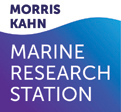Roee Diamant, Dep. of Marine Technologies. Aviad Scheinin, The Morris Kahn Marine Research Station. University of Haifa.
- Aquatic animals rely on underwater sound for critical life functions such as localization, communications, foraging, and mating.
- With the large increase in human marine activity, our seas have become populated with boats and ships projecting underwater radiated noise (URN) of extremely high power that propagates over areas of sometimes 20 square km.
- The effects of shipping URN on animal’s behavioral include communication disorders; loss of navigation capability; decrease in foraging activity.
- Current investigations are biased towards physiological impacts and a systematic study for the accumulated effects of shipping URN on the behavioral of aquatic species has not been performed.
- The main goal of our project is to quantify the impacts of shipping disturbance to the behavioral of Bottlenose dolphin (Tursiops truncatus).
- This species occurs in almost all tropical and temperate regions and can be found in both coastal and offshore waters.
- Their large range of distribution makes them ideal representatives in this study as they show plasticity in habitat choices and can migrate to another environment in case of a strong disturbance like sound.
- Dolphin’s vocalization was shown to serve as a proxy for behavioral implications. For example, no clicks and many whistles are characteristic of social behavior, while low frequency clicks typically indicate navigation or traveling and high frequency is indicative of foraging activity. However, statistical comparison of passive acoustic recordings and shipping URNs has never been explored, and thus the specific characteristics in the dolphin’s vocalization reflecting behavioral changes were not determined.
- Considering this, in our project we compare between dolphin whistles emitted in and without the presence of vessels. These will include the signal’s duration, bandwidth, maximum and minimum frequency, curving up, curving down, symmetrical shape characteristics, and variance of signal strength across the bandwidth.
- This pilot project was done near the dolphin Reef in Eilat having 4 bottlenose dolphins in the facility.
- Four hydrophones were set on the bottom nearby simultaneously sampled at 96kHz and recording continuously for a month. Two one-month deployments took place.
- The analysis focused on 3 elements:
- Detection and characterization of dolphins’ emissions (expected detection distance is 500m).
- Detection and characterization of nearby vessels (expected detection distance is 5km).
- Comparison of features in the dolphins’ vocalization according to existence of vessels.



